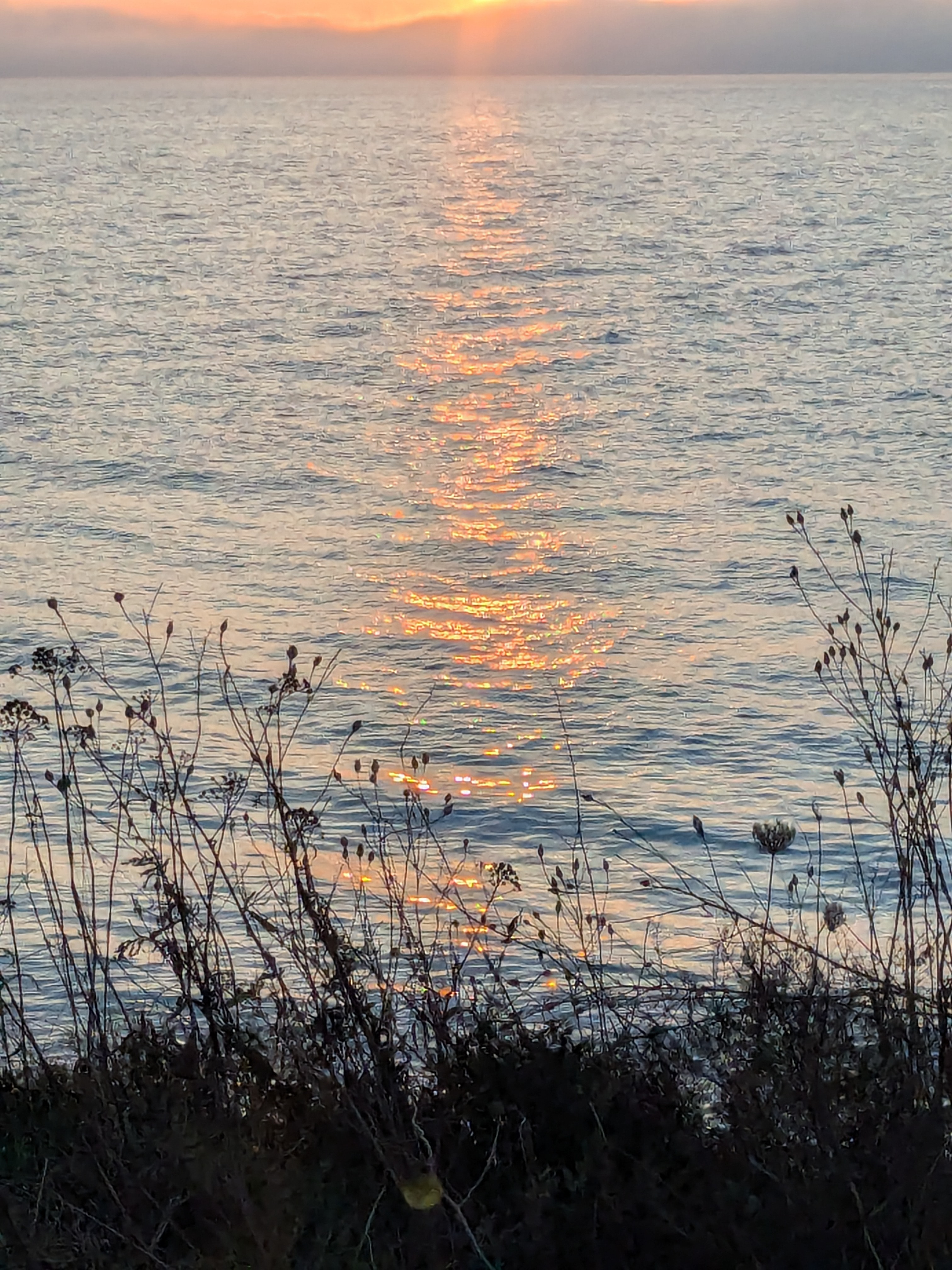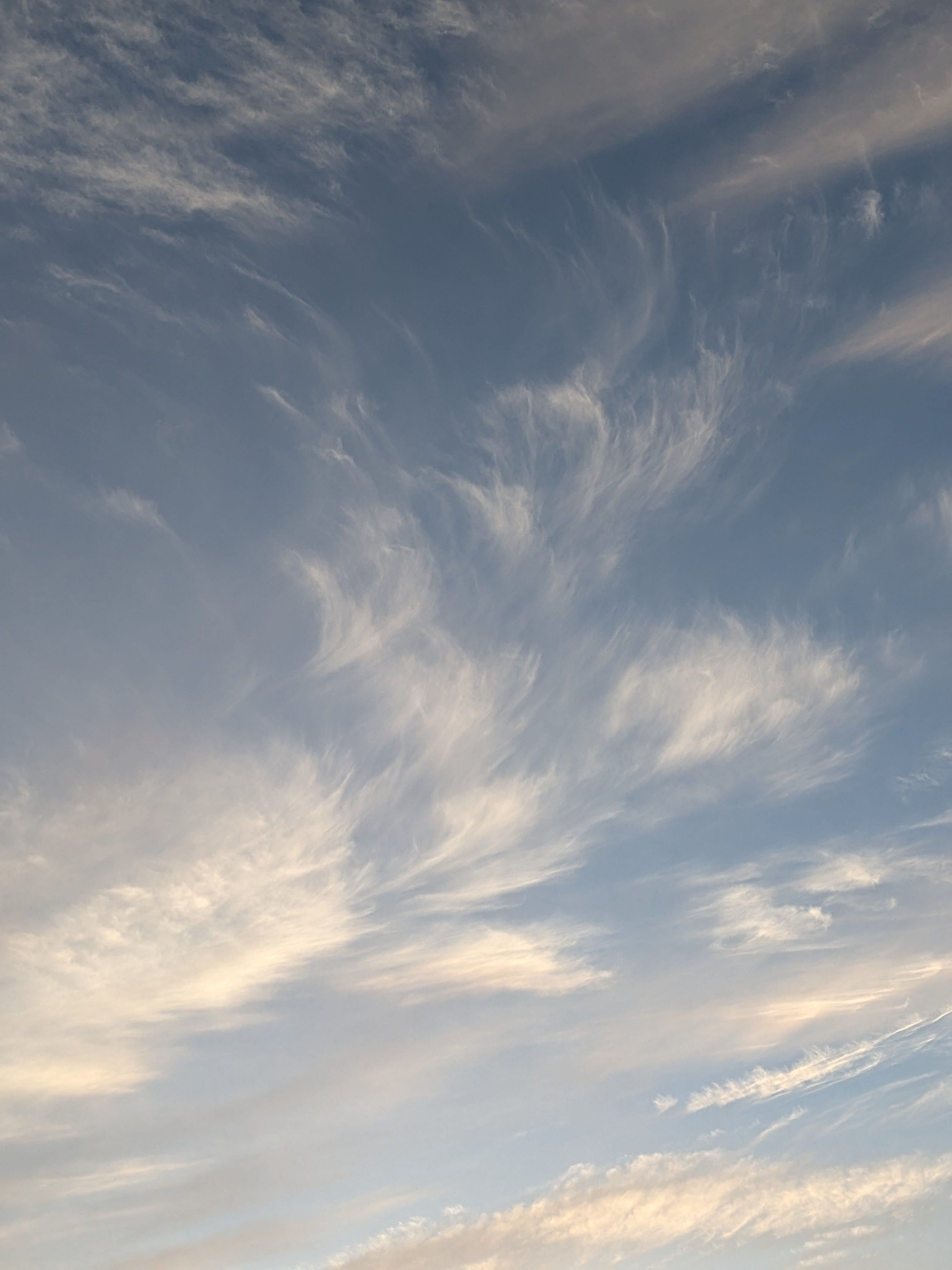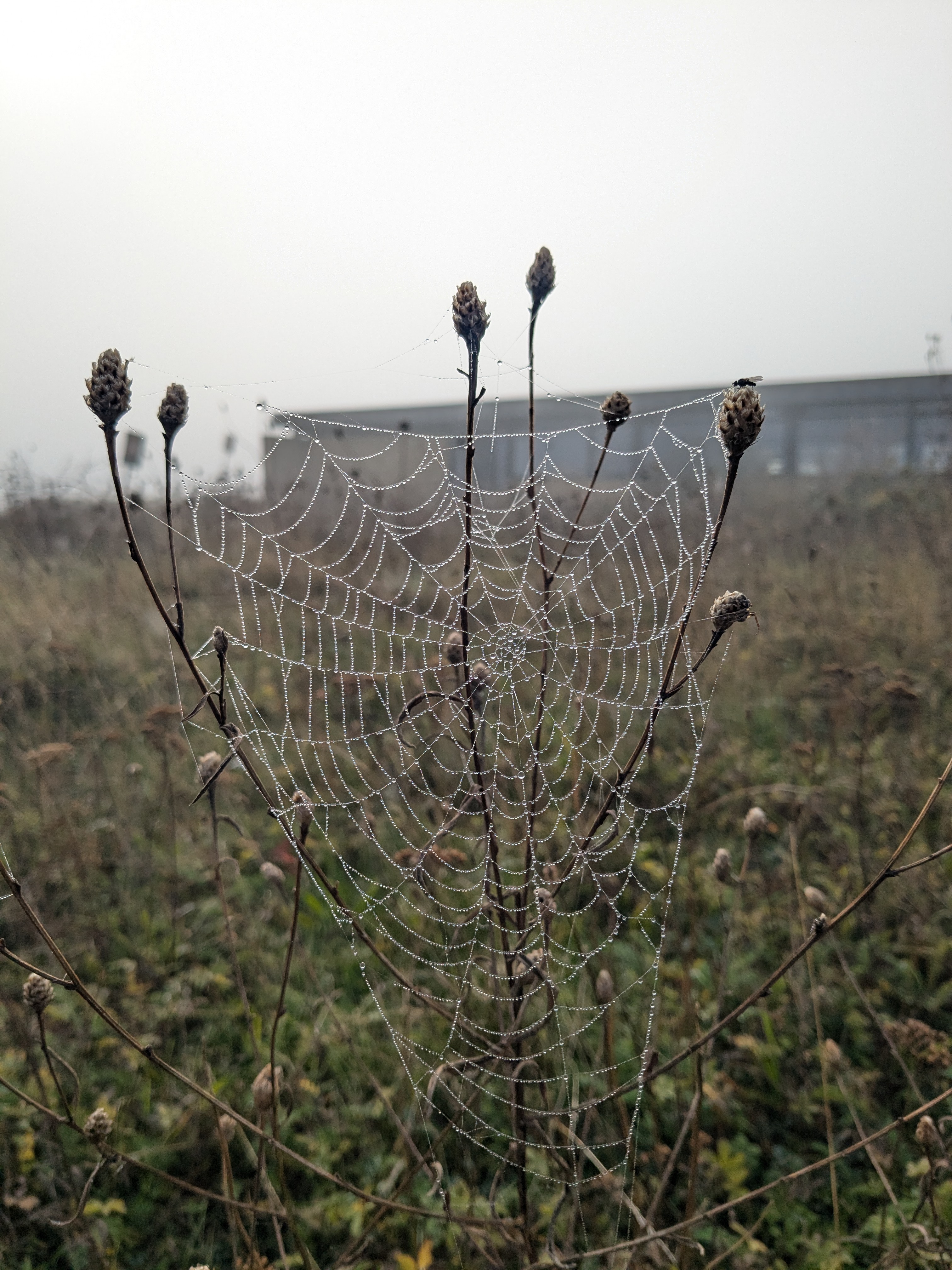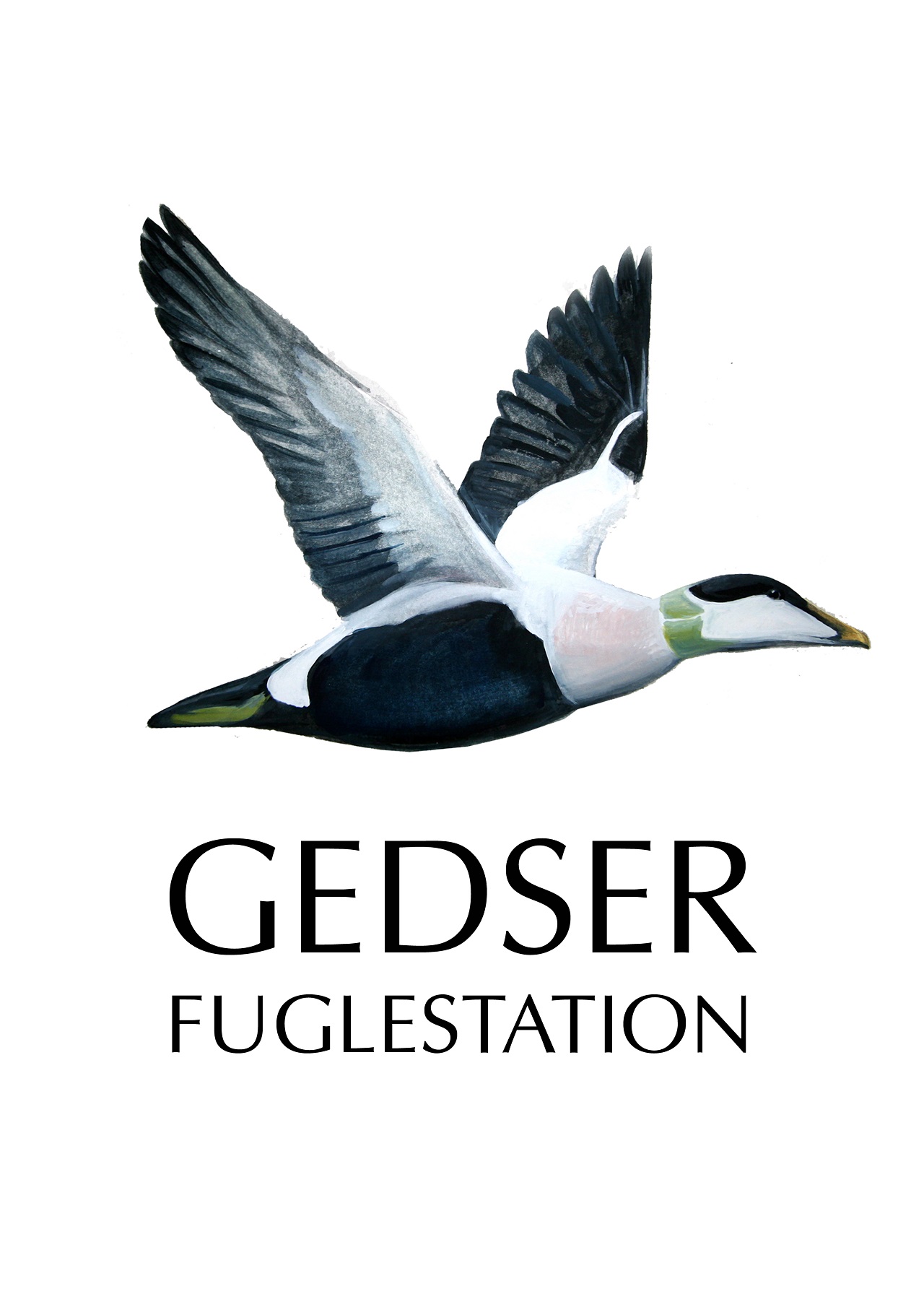Gedser Fuglestation Blog
Her på Gedser Fuglestations blog bringes korte nyheder i dagbogsformat om hændelser på fuglestationen.
The Fog
Our morning started out with a fair few Wren/Gærdesmutte (Troglodytes troglodytes) and Goldcrest/Fuglekonge (Regulus regulus), both new birds and recaptures, showing that the station garden, with all its fruit trees, to be of significance to birds stocking up for the oncoming winter and as a migratory pit-stop. Fat scores are taken for all the birds caught, providing insight into how useful the site is for foraging. Much to my delight, a single Blue tit/Blåmejse (Cyanistes caeruleus) was caught, his rather chunky blue feet latching on to my fingers as I extracted him from the net, the better to gain the required leverage for a furious onslaught of pecking. Such a gorgeous little monster!

Blue Tit fresh out of the net, photo credit: Lara W
Catches slowed towards midmorning, as fog crept in from the sea (see Larissa’s beautifully evocative photos below), settling over the garden, muffling the peeps and trills of the birdlife, until all was peacefully still. The resident Kestrel/Tårnfalk (Falco tinnunculus) who often hunts in the meadow beyond the garden, returned several times to perch high up on the metal antenna throughout the morning, backlit by the pinkish dawn sky and, later, her silhouette an ideographic smudge of dark just visible through the fog.
Several Great tit/Musvit (Parus major) flew into the nets too, all male, with their striking mantles of forest green contrasted sharply against deep lemon-yellow underparts and inky blue-black head feathers. Birds at this time of year always appear so much more vibrant in their post-breeding plumage, the crisp autumnal air and diluted tones of the sun perhaps adding a certain edge to their ornamentation.
On the closing round, I was greeted by a juvenile male Sparrowhawk/Spurvehøg (Accipter nisus), glaring upside-down at me with a bewildered yet fierce expression in his pale yellow eyes (the iris of older birds becomes more and more orange). A young bird, from his overall chestnut colouring and heart-shaped markings on the breast feathers, and clearly a male from his small and dainty stature. I have been reading Ian Newton’s The Sparrowhawk (London, 1986), an interest sparked by the many titular birds migrating across Gedser Odde of late, and it seemed especially poignant to be granted the opportunity to study an individual up close. Delicately formed, his long legs ended in sharp, strongly curved talons, designed for puncturing - as my finger gratefully experienced- the pupil constantly dilating and constricting as he took in myself and his surrounds, a reflex denoting this species position as a visual predator. Sparrowhawks predominantly eat birds, with the much smaller males taking prey items of around 5-80g, which goes quite a way to explain the extremely disturbed Goldcrest I found in the net not a metre from the small raptor. Females on the other hand, being of a larger size, prey upon birds of around 20-120g, and are known to also take Woodpigeon/Ringdue (Columba palumbus, a fascinating name to speak aloud!). It is due to this diet that Sparrowhawks migrate south in autumn, as they follow their smaller passerine prey south for the winter. Most of the Sparrowhawks passing us here in Gedser will end up around Spain or thereabouts.
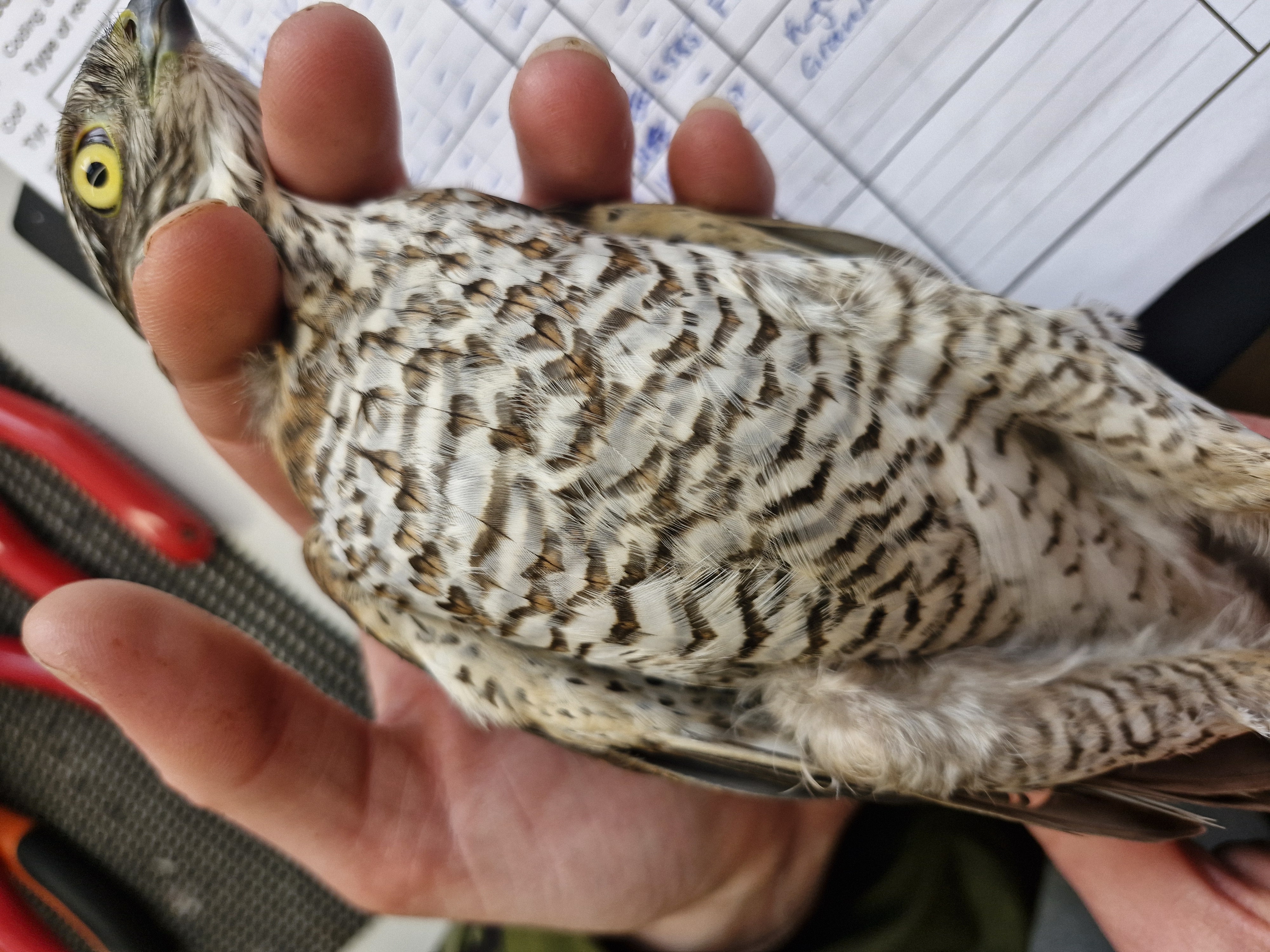
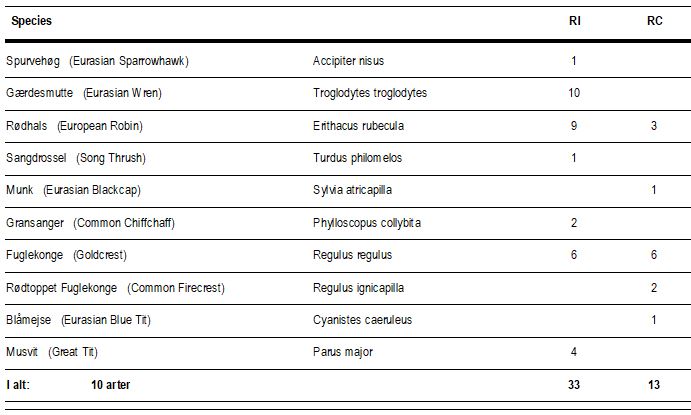
Early in the count, we saw three Long-tailed duck/Havlit (Clangula hyemalis) - it is really exciting to see these arriving. Later in the morning, the fog closed in. After patiently waiting for the fog to lift, emerging from the mist, two Guillemots appeared - one Black/Tejst (Cepphus grylle) and one Common/Lomvie (Uria aalge). Soon after this, a group of three Red-necked Grebe/Gråstrubet Lappedykker (Podiceps grisegena) followed. 12 Red-throated Diver/Rødstrubet Lom (Gavia stellata) and two Black-Throated Diver/Sortstrubet Lom (Gavia arctica) were also counted in the intervals of good visibility. The fog closed in on us once more and, this time, would stay for the remaining duration of the count. Today's foggy interludes were spent chatting, keeping an ear out for any birds flying overhead concealed in the fog, and munching on 'local' (a.k.a, from Denmark) pears - tak, Louis!
Se alle dagens observationer fra Gedser Odde i DOFbasen.
